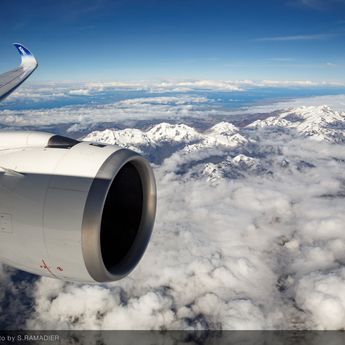It's a fact, our industry has made huge progress in safety since the 1950s. This is especially true of the past three decades, when technology has facilitated substantial improvements.
In this series, we revisit some of the innovations that have provided step changes in improving product safety. Here, we look at the Flight Management System, or FMS.
The FMS, which was integrated into the flight deck during the early 1980s, is an avionics system comparable to the satnav used by many car drivers. It uses a predefined flight plan to calculate and display an aircraft’s lateral and vertical trajectory, providing guidance throughout the flight.
The system provides the estimated flight time that pilots announce to passengers before take off, and the amount of fuel expected to remain on arrival. If an aircraft is diverted during flight, the FMS can calculate whether it has enough fuel remaining to reach its new destination.
The FMS also contributes to flight safety by helping pilots manage their workload, assisting them with navigation tasks and enabling them to make informed decisions.
During takeoff and landing, the FMS provides valuable assistance by calculating trajectories based on numerous parameters, including terrain altitude, runway location and the specifics of a given airspace. This support is even more useful around airports with high traffic density or in mountainous areas.

In cruise, the FMS contributes to flight safety in airspaces without radar coverage by providing air traffic controllers with reports containing information on the aircraft’s current position (latitude, longitude, altitude, heading, etc.), its estimated time of arrival, and its altitude at specific waypoints. This information is typically fed to satellites, enabling air traffic controllers to accurately manage the distance between aircraft over areas such as the North Atlantic.
One important input to the FMS is the navigation database, which contains all routing and airport data that the FMS needs to function correctly. This database, essential to the proper functioning of the aircraft as well as global air traffic management, is updated by operators – mainly airlines – every 28 days.
This means the FMS can fully play its role and continue to contribute to safe air transport.
Safety Innovation series
Continue Reading

Airspeed information, whatever the conditions
Web Story
Safety
Airbus has developed a system which improves management of unreliable airspeed events.
How to make takeoff safer
Web Story
Safety

A new workshop designed with safety in mind
Web Story
Safety

Using aircraft as sensors to prevent runway overrun
Web Story
Safety

Severe weather hazards: the best is to anticipate and avoid
Web Story
Safety

